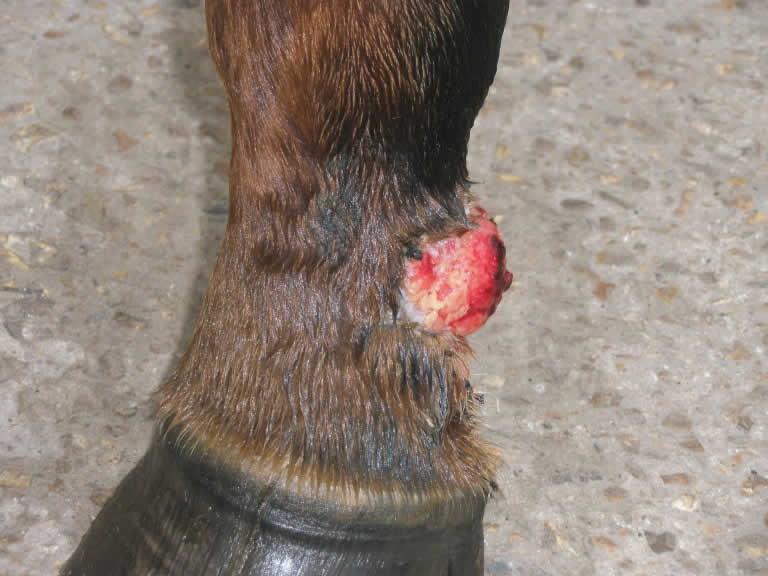
The Sinister Sarcoid
Tuesdays with Tony
It’s almost Halloween, are you in the mood for a scary story? There are few things that make my docs’ skin crawl like the sinister Sarcoid. So what is this ghoulish growth on your horse’s skin? Let me share a little Tony wisdom with you about this weird, not quite cancer, but definitely tumor, that horses get, and veterinarians hate.
What Is It?
Long story short, a sarcoid is a skin tumor caused by a virus. They’re really common – actually the most common tumor that horses get, with 2% of the equine population estimated to be affected. Any color, sex, or breed of horse, donkey, or other equid can get them. You may have seen one before – they often look like warty, crusty, bumpy skin growths, but there’s a lot of variation in their appearance, and they can get nasty, aggressive, and ulcerated as well. More on that later.
Sarcoids are caused by a bovine papillomavirus, basically a cow wart virus. It’s thought to be transmitted by flies, from infected cattle or other horses. It’s that virus part that makes them so tricky to deal with, since they don’t act quite like other types of tumors.
Sarcoids can stay small for years and just look like a wart or a patch of bald skin. Then they can start changing – and things can get ugly fast. As they enlarge, the skin can ulcerate, attract flies, and become infected. They can look like open sores that won’t heal. While they’re a kind of cancer, the only good news about sarcoids is they don’t metastasize. That means little bits don’t break off to go form new tumors elsewhere on the body. If you see a horse with multiple sarcoids, each one of those is its own separate little hell creation, not a spawn.
Recognizing a Sarcoid
Sarcoids can have many different appearances, and in the early stages can be hard to even notice. There are 6 different types.
Occult sarcoids look like a circular hairless area, or where the hair color or thickness is the only change. They’re easily confused with rub marks from tack, or with other skin conditions like ringworm. Some occult sarcoids stay the same size and appearance for years before starting to change.
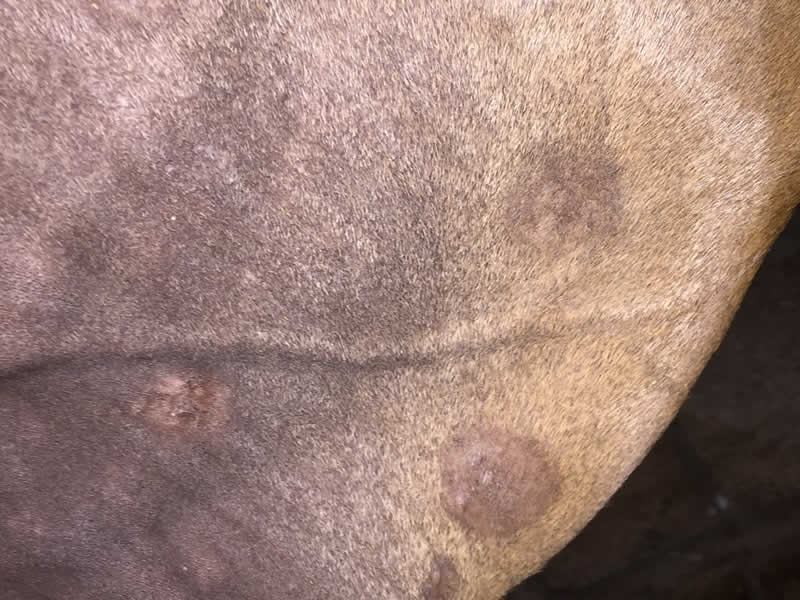
Verrucose sarcoids are mostly flat and usually look grey and wart-like. They can be flaky or have dandruff-like material that rubs off. Sometimes there are small nodules within the skin, or they can crack or ulcerate.
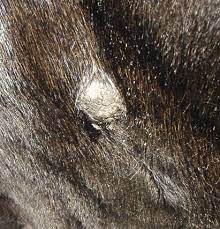
Nodular sarcoids look like firm bumps under the skin. They can be single or multiple and are usually easier to notice than the first 2 types. The skin will usually be intact over the nodule.
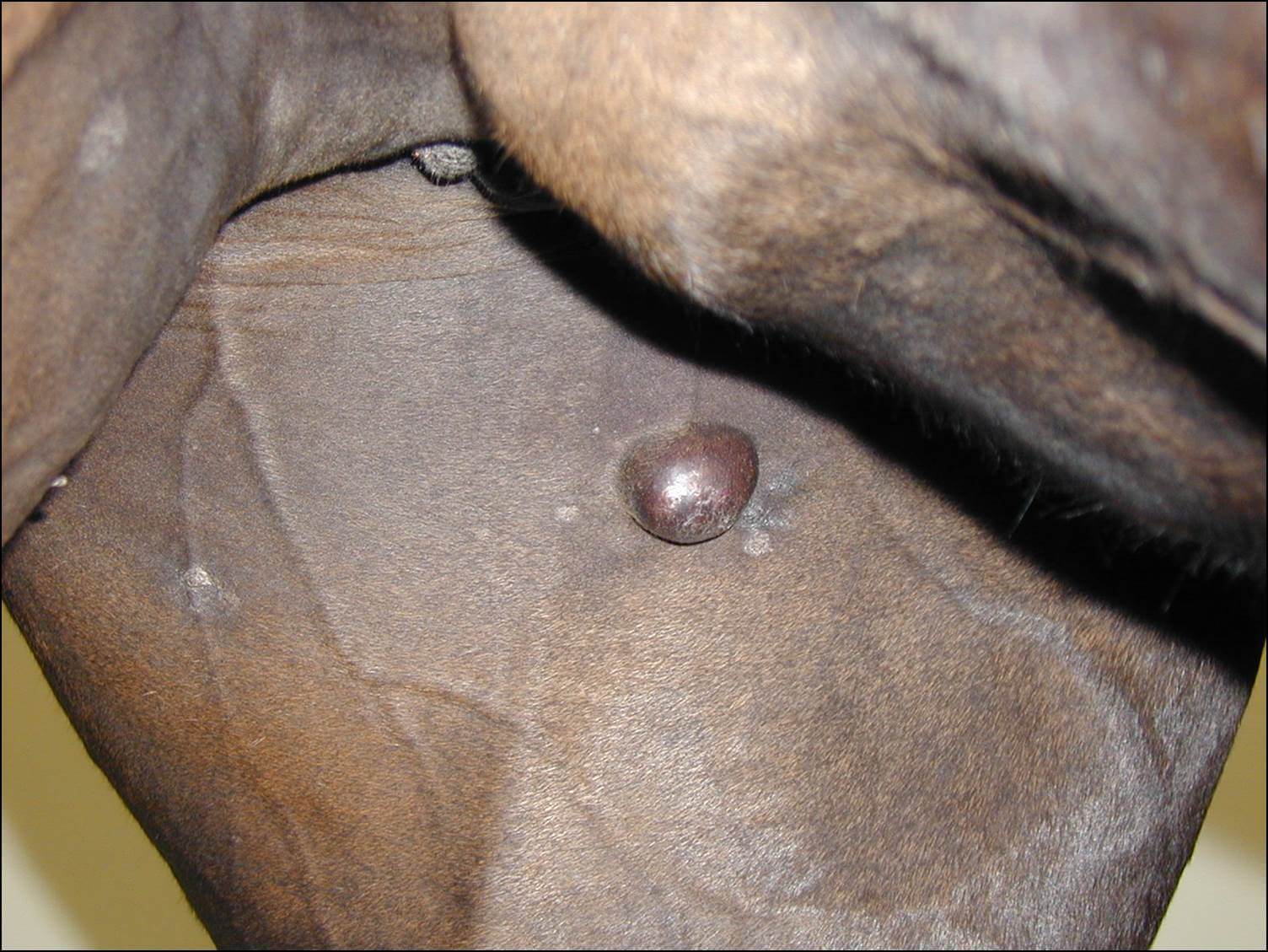
Fibroblastic sarcoids form nodules as well, but are more aggressive looking, and the skin over them is fleshy and ulcerated. Treating these early is critical.

Mixed sarcoids are a mix of the different types and are quite common.
Malignant sarcoids are the most aggressive type, and the scariest. They spread extensively through the skin and underlying tissues. These are often really ugly lesions – large and invasive with ulcerated nodules. They like to grow on the side of the face, the inside of the thigh, and the elbow. Thankfully, this is the rarest type, as they are very difficult to treat.
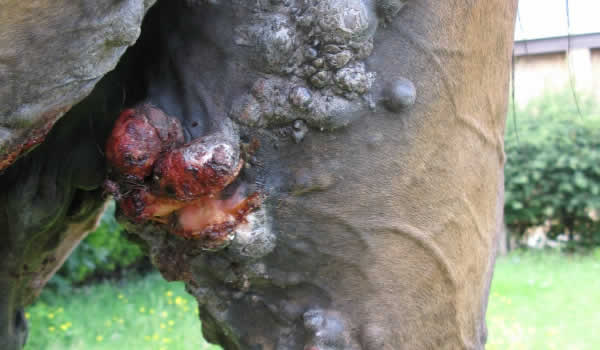
Battling the Beast
Have I sufficiently horrified you? Want that thing gone from your horse? Yep, we hate them too. But it gets worse. Because sarcoids are caused by a virus, it’s not as easy as having my doc come out and cut it off. We would LOVE it if that worked. But even if my doc surgically removes all the tissue that looks like sarcoid, the “normal” looking tissue next to it can still be infected by the virus, and it can turn ugly next. Sarcoids often react poorly to negative stimuli, much like cats.
The approach my Docs take will depend on what that appearance of the sarcoid is. There are numerous treatment options, with no one option being suitable for every case. The appropriate treatment is dictated by the type of lesion and the location, so do yourself a favor and DON’T listen to that random guy on Facebook who tells you he’s got a lotion or potion that will clear any sarcoid right up. There are several types of (legitimate veterinary) treatments that are available, but unfortunately due to the tricky nature of sarcoids, there isn’t one silver bullet that is guaranteed to work, and many things that can make it worse.
My Docs may take a wait-and-see approach with the occult and verrucose variety, since poking that tiger may wake it up. If a sarcoid looks like it’s changing, early intervention is needed to treat it before it gets larger and more difficult to deal with. Treatment may involve topical ointments, injection of chemotherapy or immune modulators into the tumor, surgical procedures or lasers. Often, it’s a combination of these methods. There are also some specialty treatments like electrochemotherapy or radiation that can be very effective but are usually performed only at veterinary schools and require general anesthesia. It’s important to remember that any treatment may have to be changed or repeated if the sarcoid doesn’t respond well or comes back later. That’s just the nature of sarcoids and can happen despite everyone’s best efforts. Yet another reason why we hate them.
There’s no way around it, sarcoids suck. My very best cat advice: Control the flies around your barn and ask my Docs early if you find any weird skin growth on your horse.
Until next week,
~ Tony
P.S. Have you seen the Halloween Horse Costume video my docs made? It’s hilarious, and one of a ton of great videos that you’ll find over on my YouTube Channel. Make sure you subscribe while you’re there so you’ll get an alert when I post a new video. Much like reading my blog, it will make you a better horse human. You’re welcome.
Tuesdays with Tony is the official blog of Tony the Clinic Cat at Springhill Equine Veterinary Clinic in Newberry, Florida. If you liked this blog, please subscribe below, and share it with your friends on social media! For more information, please call us at (352) 472-1620, visit our website at SpringhillEquine.com, or follow us on Facebook!
[jetpack_subscription_form title="Subscribe to Whinny's Wisdoms"]

